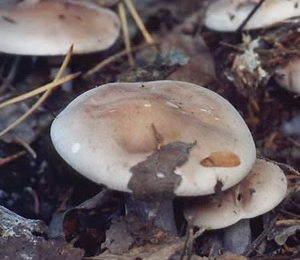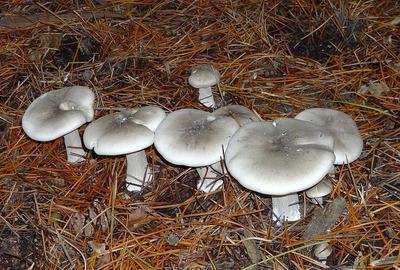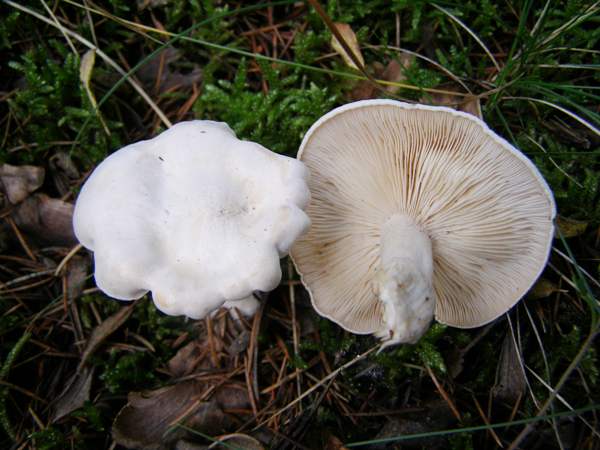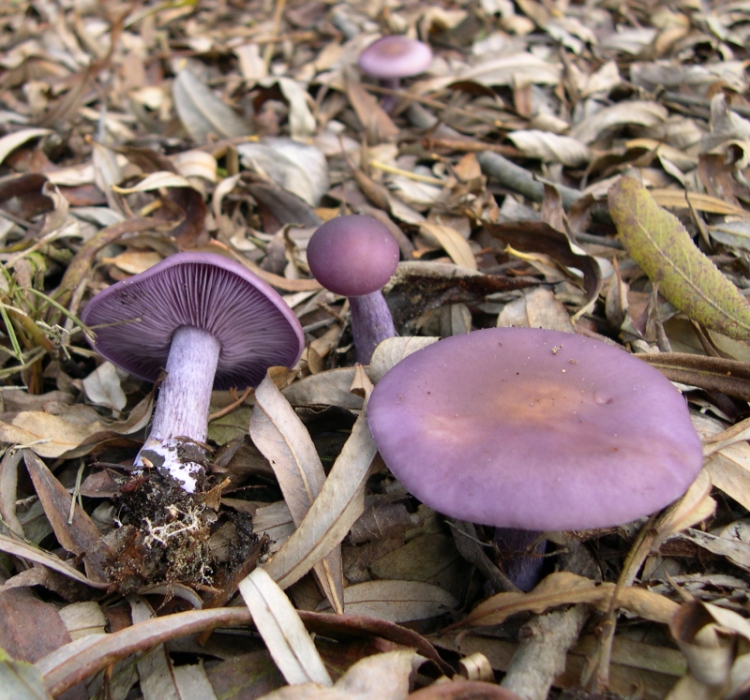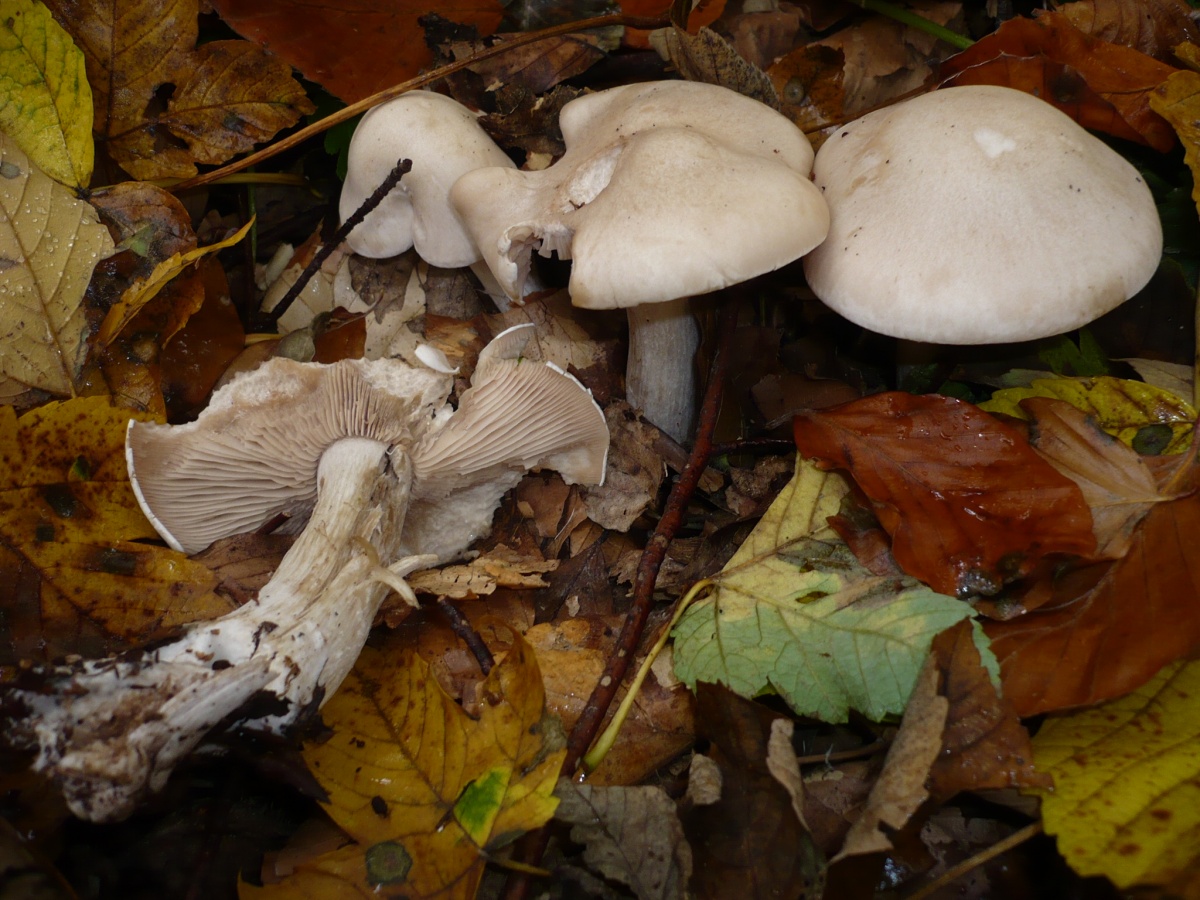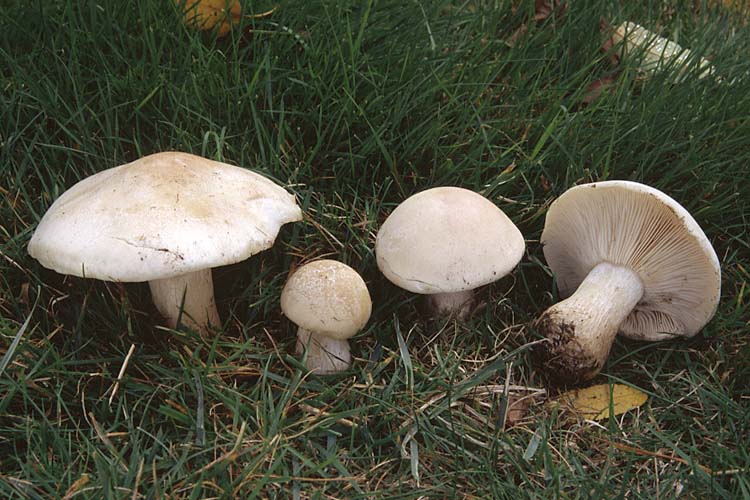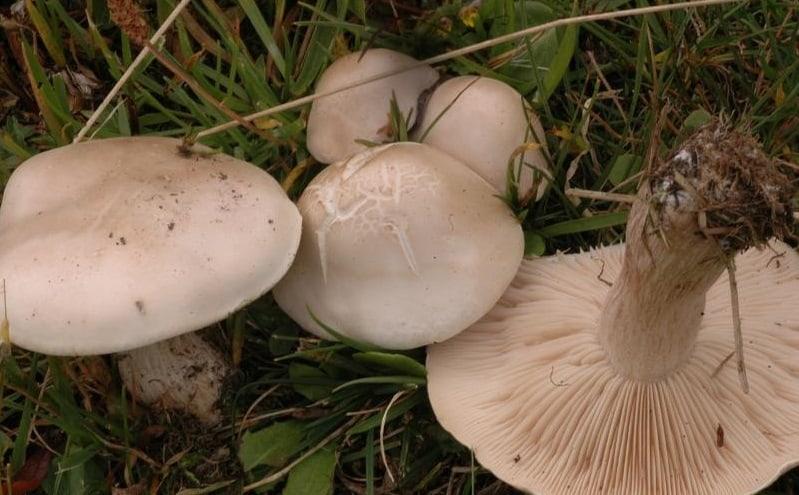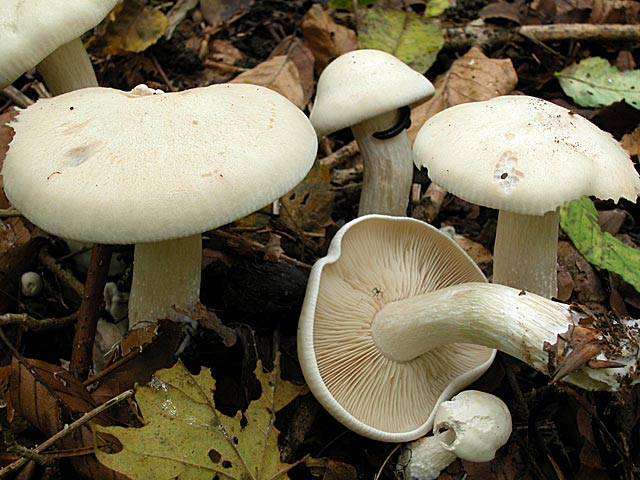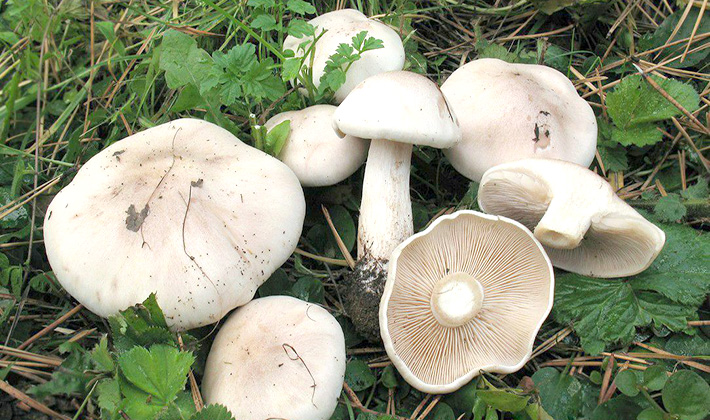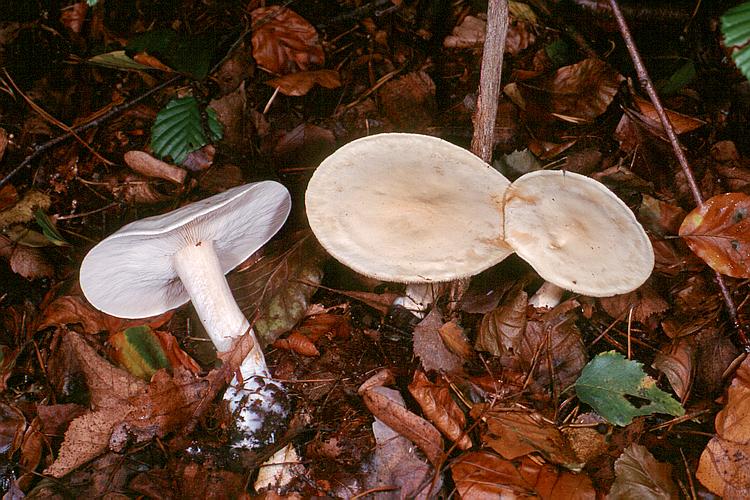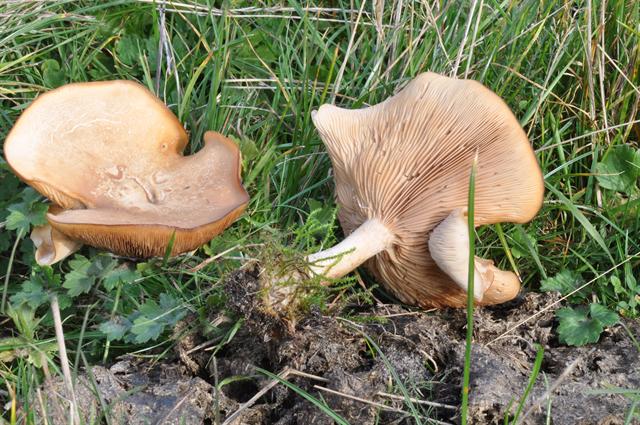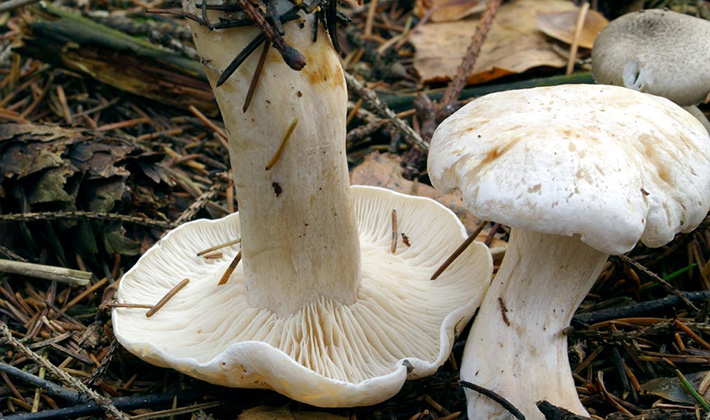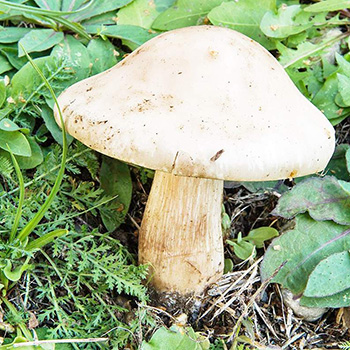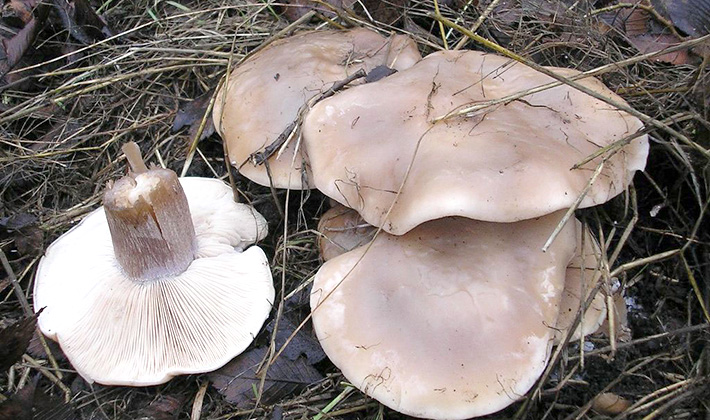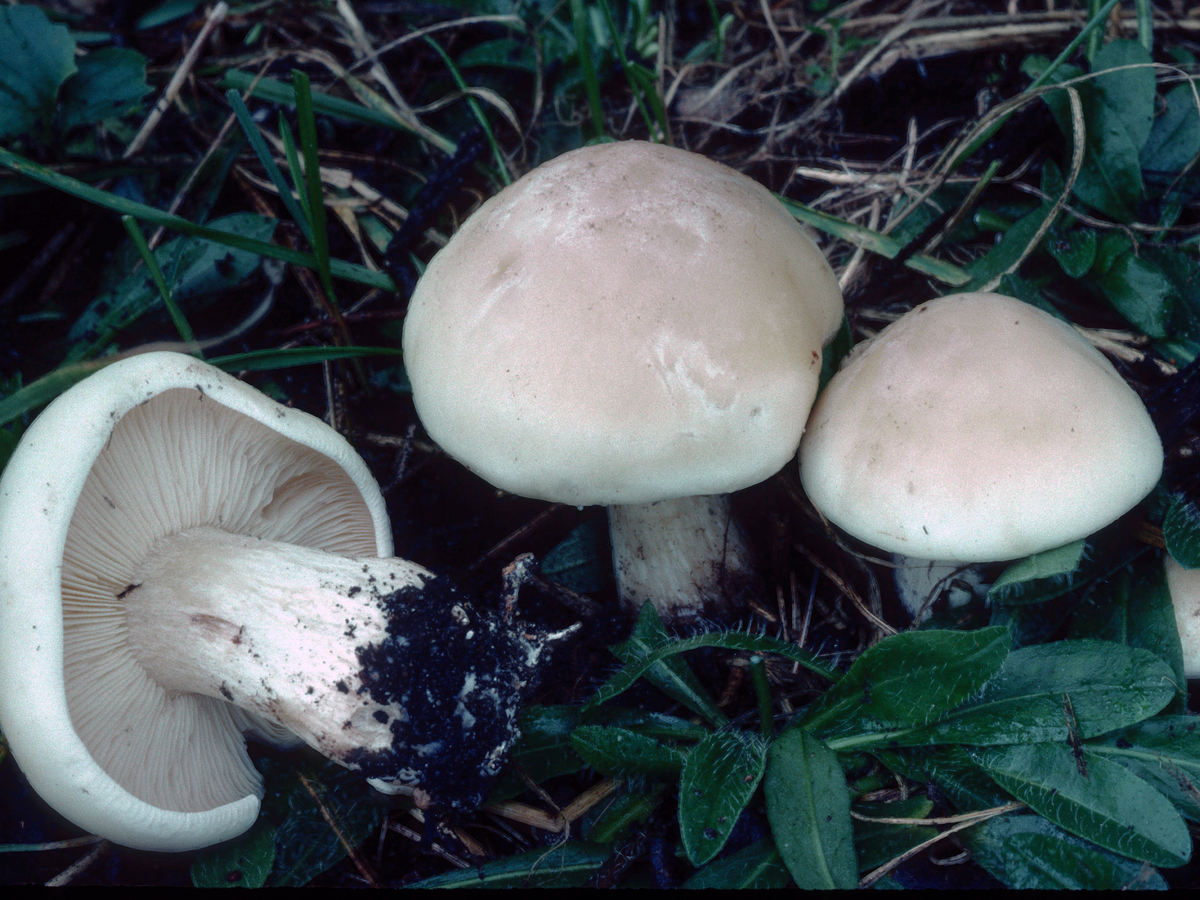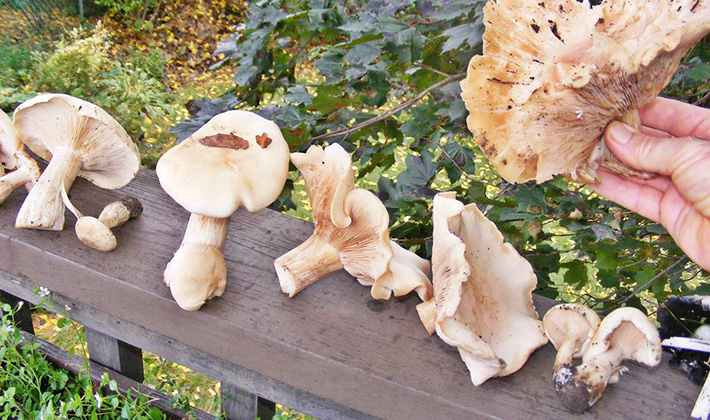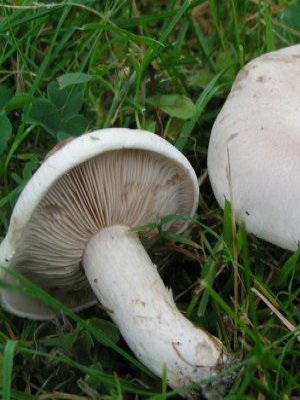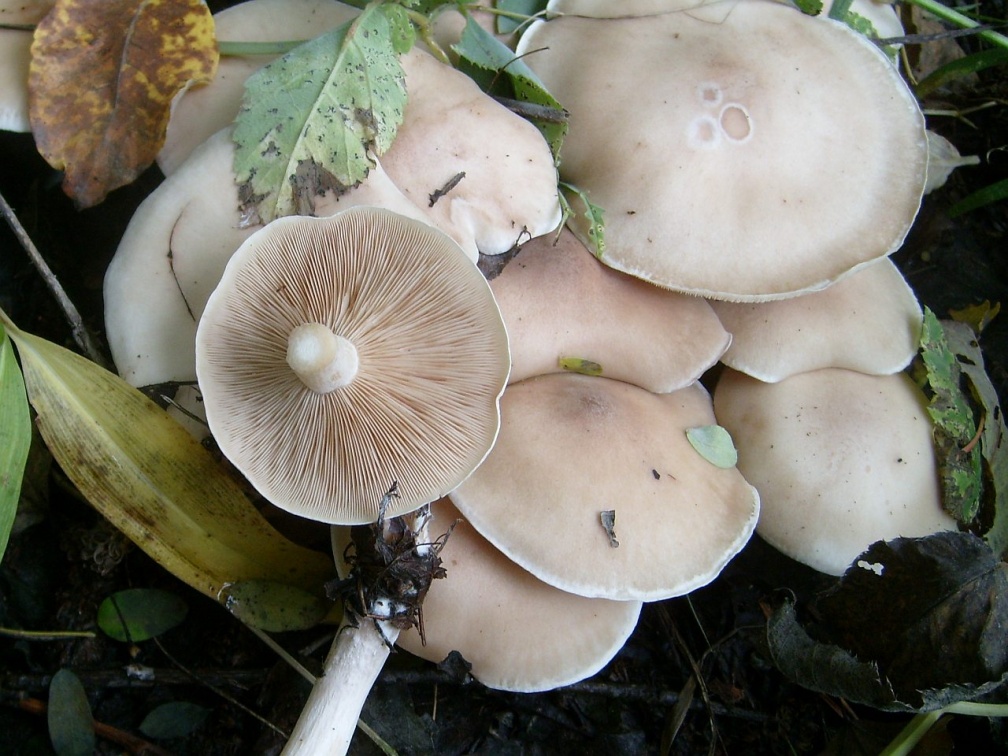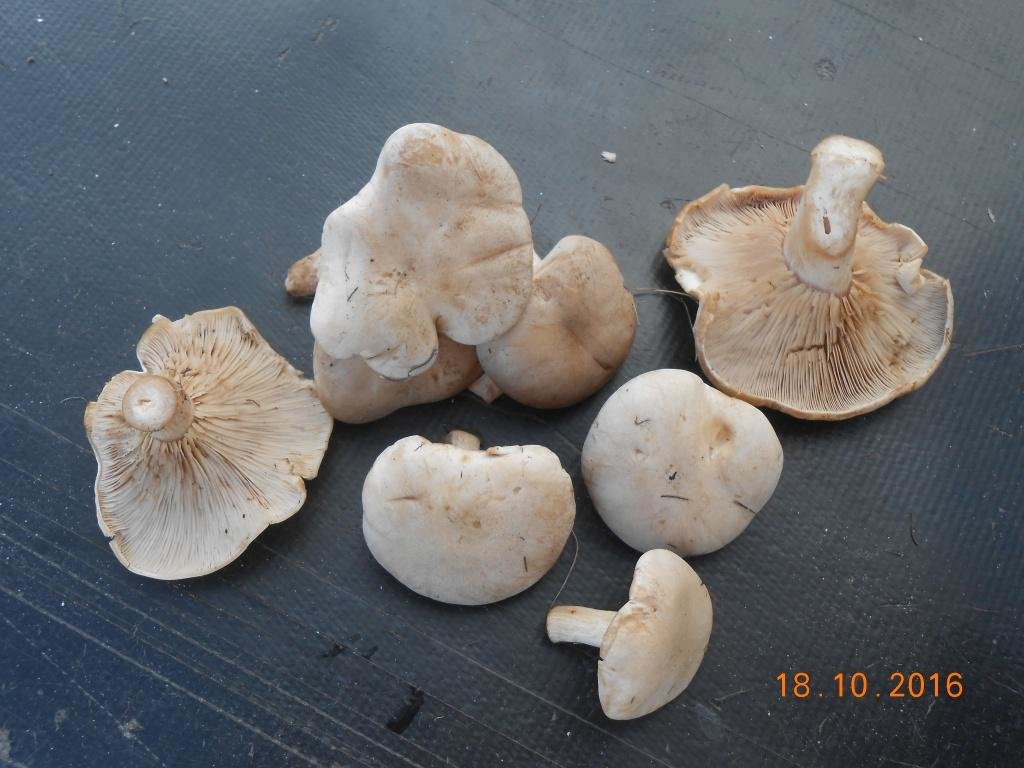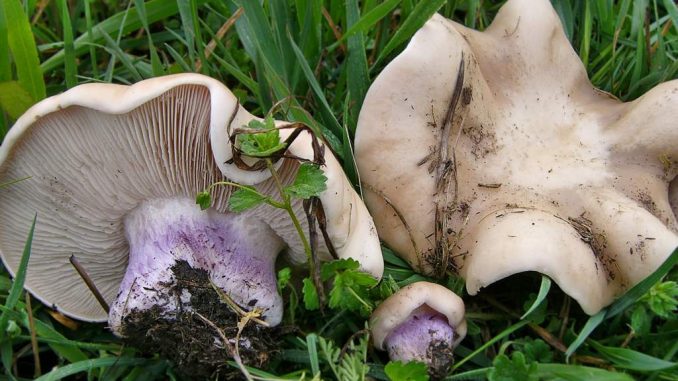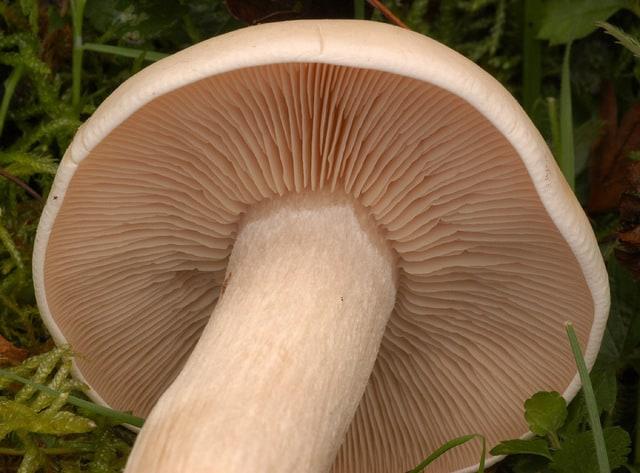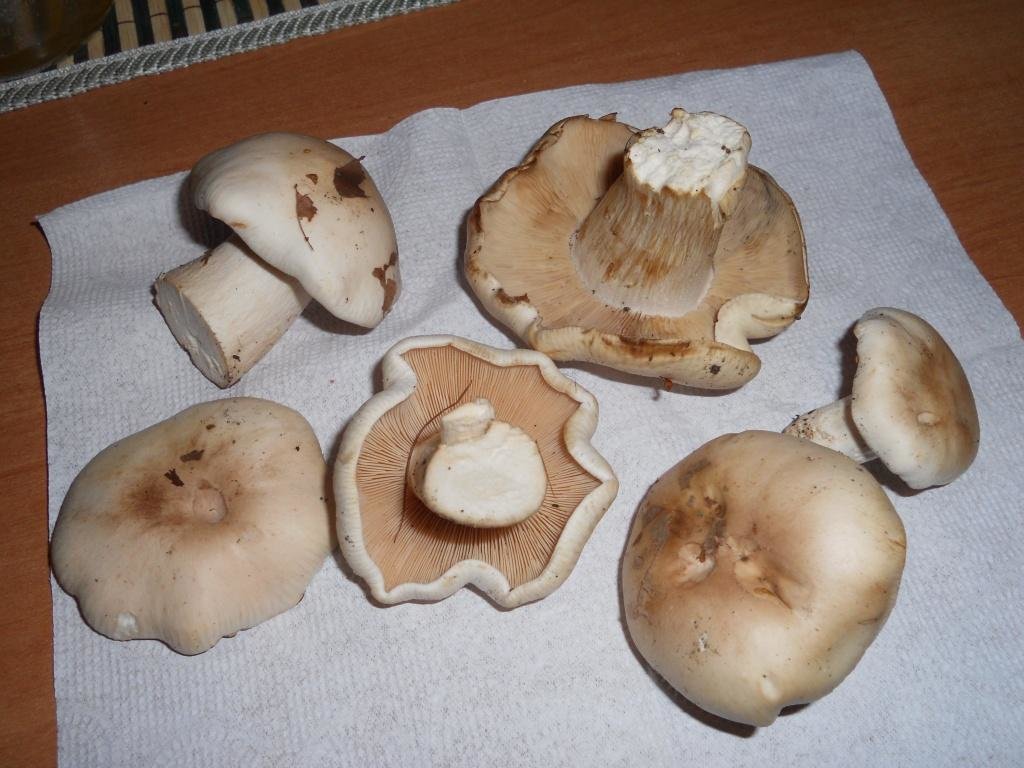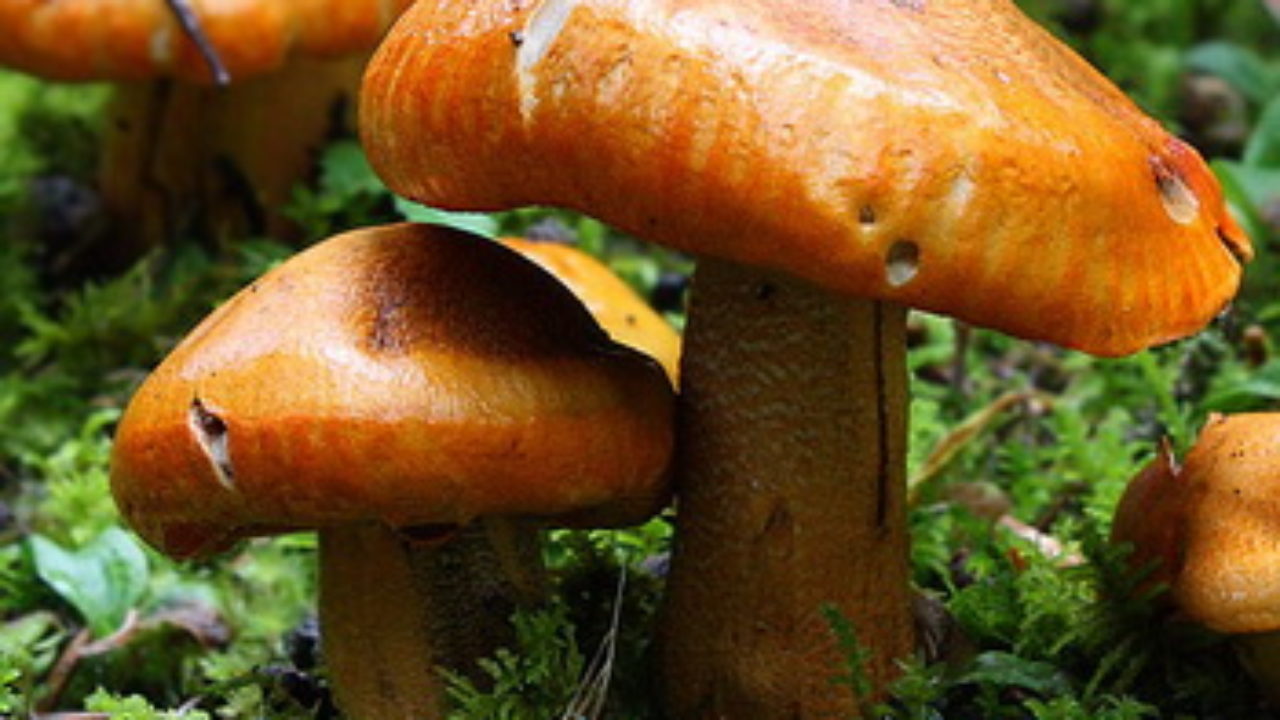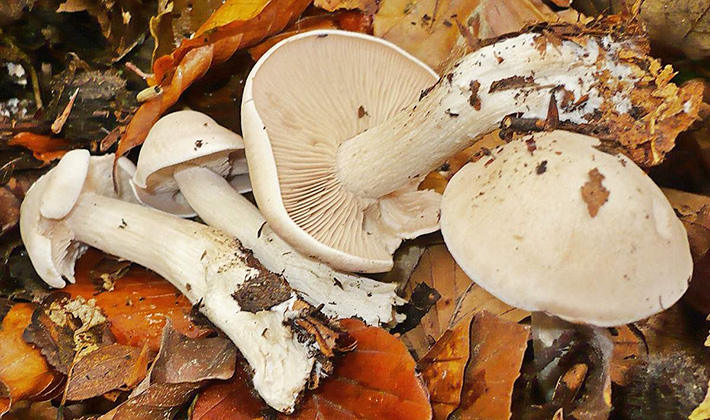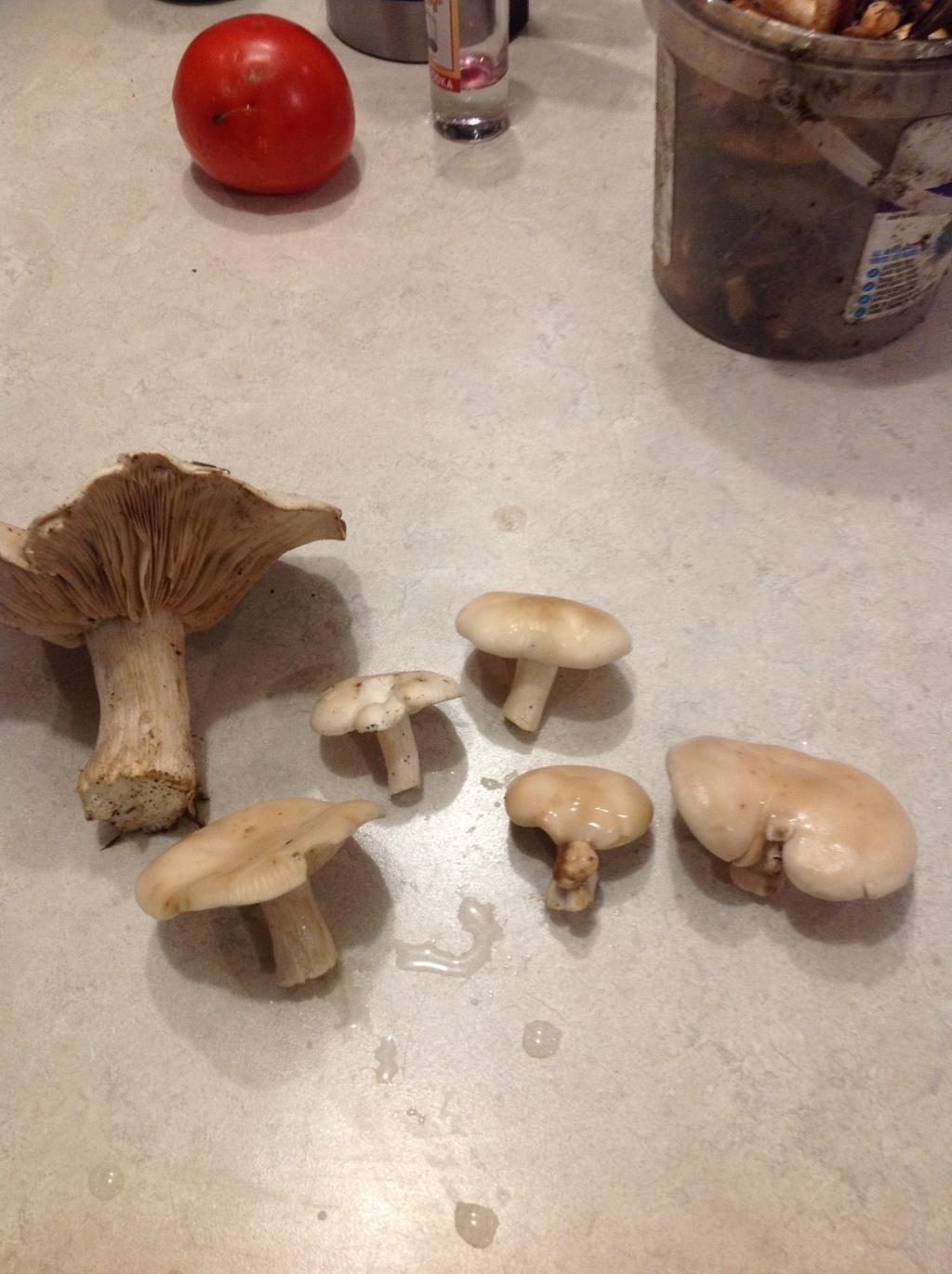Row purple: photo and description
Row violet (lepista naked) belongs to the species representing the genus Lepista, the Row family. The mushroom is classified as conditionally edible, which means that it is strictly forbidden to eat it raw.
The most popular edible mushrooms are: chanterelles, porcini mushrooms, russula, honey agarics, volnushki, ryadovki, flyworm, milk mushrooms, boletus and aspen mushrooms.
Therefore, in order to feast on a ryadovka, it must be boiled thoroughly, and only then given to the main culinary processing.
Video: what a purple row looks like
But this does not mean at all that the naked lepist is a dangerous and poisonous fungus, it does not contain highly toxic substances, but the use of such a product in its raw form can cause serious stomach upset.
Did you know? The first mention of such a life form as mushrooms is found in the IV BC. NS. in the writings of the ancient Greek philosopher Aristotle.
In addition, the ryadovka has a rather bright appearance, similar to some poisonous representatives of the mushroom kingdom, therefore, so that its use does not end with serious consequences, it is necessary to carefully understand the morphological features of the species.
Hat
The cap of all representatives of the species can reach a diameter of 6-15 cm. Initially, its color is a distinct purple hue, but over time it changes to lavender with a slight manifestation of brown tones.
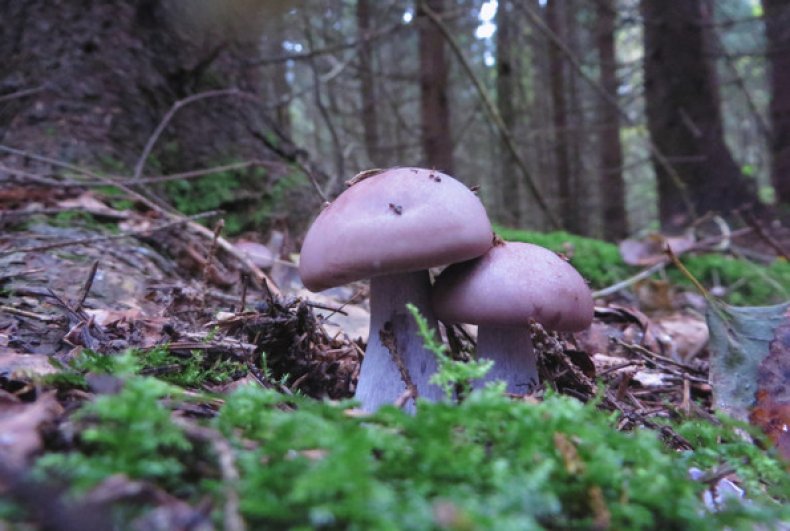
Often, the cap is flat or slightly convex, its edges are not uniform.
In structure, it is dense, fleshy, but sometimes it can be watery. The lower part of the cap, bearing the spore-bearing organs, is also a bright purple hue, which eventually fades to a greyish-lilac color.
We recommend that you familiarize yourself in more detail with the beneficial properties of the rowing mushrooms, as well as their varieties, such as the green ryadovka (greenfinches), the poplar ryadovka and the gray ryadovka (serushki).
Pulp
The flesh of a young ryadovka is fleshy, dense, almost always elastic, grayish-purple in color. Over time, it becomes softer, and its shade changes to ocher-cream tones. The smell of the mushroom is characteristic, it is mainly persistent, but pleasant aroma of anise.
LPs
The plates are always numerous, thin and wide, adherent with a tooth, but in some cases crescent, almost always free.
Initially, they have a bright purple hue, which fades over time to a delicate light purple color.
Leg
The leg in all representatives of the species is even, smooth and fibrous, cylindrical in shape and thickens towards the base. In young mushrooms, it is solid, but over time, cavities form in the stem.
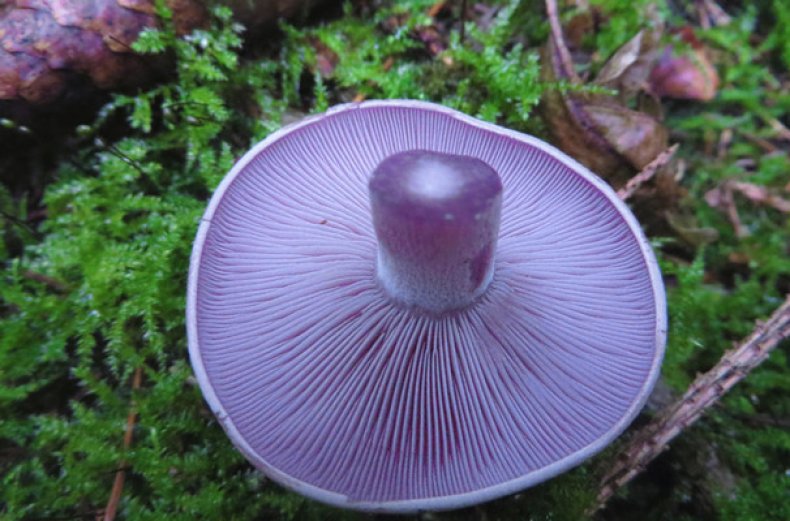
There is a flocculent bloom under the cap. Its color ranges from light purple to slightly pale shades of lilac. The height of the leg can reach from 4 to 8 cm, the thickness is no more than 1.5-2.5 cm.
At the base of the leg, purple pubescence develops - the so-called mycelium.
Spores and Spore Powder
The spore powder in ryadovka is always light pink or pinkish-yellow.
Spores are small and numerous, slightly rough, ellipsoidal, pink in color. Their length is within 6-8 microns, width is not more than 4-5 microns.
Did you know? In nature, there are predatory fungi, these are representatives of the genera Arthrobotris, Dactylaria, Monacroporium, Tridentaria, Tripospormna. Using the mycelium, they create small traps for catching and over-picking small soil worms.
RYADOVKA PURPLE (titmouse, cyanosis, lepista / naked talker)
Hat: 4-20 cm in diameter, flat-convex, with a thin curved edge, naked, smooth, watery, moist, thick-fleshed.The color of the cap is necessarily with a significant proportion of violet: bright, dark or purple-violet, sometimes with an admixture of brown, in the center - brown-violet. The plates are frequent, purple, later light purple to pale lilac. The pulp is thick, dense, bright purple, with age it fades like a cap or even stronger, the taste and smell are pleasant.
Leg: 3-10 x 0.7-3 cm, dense, cylindrical, slightly thickened below, at the base covered with a purple-brown felt mycelium, purple at an early age, later lightening, under the cap is whitish-mealy, sometimes hollow with age.
Habitat: in forests on soil and forest floor, in large groups, rings, often, in places abundant.
Fruiting period: from early September to late November (with a maximum after the first cold in September and early October).
Distribution in the Russian Federation: throughout the temperate forest zone, in forests of various types on soil and forest litter.
Similar species: see Lepista personata. It differs from blue- and violet-colored cobwebs, first of all, by the absence of a clavate expansion at the base of the leg and a cobweb private veil that protects the plates at the cobwebs.
Edible: edible and tasty mushroom, does not require (from my point of view) preliminary boiling.
It is used for preparing first and second courses, snacks, salads, fillings.
Information about the allergenicity or toxicity of the violet row, which appeared at different times from different authors, has now been refuted by a number of studies.
However, you should know that bruises are one of the most active bioaccumulators of anthropogenic pollution (ranked third after May mushroom and pigs), primarily heavy metals (tin, copper, mercury, cadmium). Therefore, you should avoid collecting them in city parks and in forests near industrial sites.
Medicinal properties: the mushroom is high in vitamin B1, stearic acid and ergosterol.
The extract of the cultural mycelium of this talker has anticancer properties and inhibits the growth of sarcoma-180 by 90 in laboratory animals, Ehrlich's carcinoma - by 100%. It has a strong cytotoxic effect on human cells of the L-1210 tumor line; in culture, it can inhibit the development of MCF-7 breast cancer and Walker 256 sarcoma.
Antibacterial action is directed to both gram-positive and gram-negative bacteria. The growth of E. coli, Staphylococcus aureus, Streptococcus pyogenes and Streptococcus enteretidis is inhibited.
Antifungal activity was also found (suppresses Candida albicans). Contains vitamin B1, which is effective against beriberi disease, and lowers blood glucose levels.
Currently, on the basis of purple ryadovka, a dietary drug is being developed to control hypoglycemia.
In addition, ryadovka violet has anti-inflammatory and immunomodulatory activity, promotes platelet aggregation and increases the body's resistance to the influenza virus.
In Chinese medicine, regular consumption of food is believed to help maintain the nervous system. It is also used to regulate sugar metabolism, treat spleen, rheumatism and dermatophytosis of the legs.
Taxonomy
Views
- Lepista caespitosa (Bres.) Singer, 1951 - Sod Lepista
- Lepista densifolia (J. Favre) Singer & Clémençon, 1972 - Lepista densifolia
- Lepista diemii Singer, 1954
- Lepista fibrosissima Singer, 1954
- Lepista flaccida (Sowerby) Pat., 1887 - Lepista reverse, or reddish-brown
- Lepista glaucocana (Bres.) Singer, 1951 - Lepista blue-gray, or lilac-gray
- Lepista irina (Fr.) H.E. Bigelow, 1959 - Violet Row, or Violet Lepista, or Perfume Row
- Lepista luscina (Fr.) Singer, 1951
- Lepista multiformis (Romell) Gulden, 1983
- Lepista nuda (Bull.) Cooke, 1871 - Row purple, or Lepista naked
- Lepista ovispora (J.E. Lange) Gulden, 1983
- Lepista panaeolus (Fr.) P. Karst., 1879
- Lepista personata (Fr.) Cooke, 1871 - Row two-color, or Lepista two-color, or Lepista purple-legged
- Lepista pseudoectypa (M. Lange) Gulden, 1983
- Lepista rickenii Singer, 1948
- Lepista sordida (Schumach.) Singer, 1951 - The row is dirty, or Lepista is dirty
- Lepista subaequalis (Britzelm.) Singer, 1951
Playground: how to keep children busy at all times
But the most important "natural disaster" - children - is often completely forgotten when arranging a site.But you don't want kids, nephews and just small guests of friends out of boredom to break some expensive lamp for you, light a serious fire in a barbecue or hopelessly clog filters in a pond?
But in fact, sometimes a vacation outside the city is painfully similar to a comedy. Although it would be more correct to call such a weekend "nine crazy adults and two children who really have nothing to do." Just move the farthest corner of the lot in front of the bathhouse for the playground - and direct this uncontrollable chaos there.
So where do kids usually like to spend their time? The first is the tree house. You can put together this miracle of architecture with your own hands from ordinary inexpensive boards. You can even draw a project yourself, take care only of the safety and stability of the structure itself. And then paint the tree with permanent facade paint - and the house is ready!
The second successful solution is a garden swing. Just make them wide enough so that several children can sit at once and fasten one extra crossbar on top so that later this swing cannot make a circle (for safety reasons).
All this is really necessary, because the child will not sit in the steam room for a long time, and he will have to occupy himself with something else for the rest of the hours. Let the rest in the bath be without smartphones, tablets and e-books!
Description of the row of violet
The hat is fleshy, large, its diameter is 5-15 centimeters. The shape of the cap of the row of violet, as it grows, changes from cushion to prostrate, while the edges are uneven. The hat is matte, ranging in color from whitish to pinkish brown, with the center often darker in comparison to the edges.

The flesh of the cap is thick, dense, white, has a pleasant perfumery or floral aroma, its taste is delicate, sweetish. The plates are free, often located, often they do not reach the massive stem. In young fruit bodies, the plates are whitish, but when the spores ripen, they turn pink. Spore powder of pink color.
The leg is large - 5-10 centimeters high and 1-2 centimeters in diameter. The leg grows slightly towards the base. The color of the leg is pinkish cream or whitish. Its surface is covered, like that of other members of the genus, with vertical strokes, but they are not always noticeable enough. The leg is stiff, fibrous.
Places of growth of rows of violets
The violet row is an autumn mushroom; it bears fruit from September to October. The fruiting time coincides with the purple row. They often grow in the same places, giving preference to thinned forest edges of coniferous and deciduous types. Violet rows settle in groups or circles.

Taste qualities of ryadovka violet
This is a good edible mushroom. In terms of taste, the violet row is on the same level as the purple row.
A light violet scent gives the mushroom uniqueness and piquancy. It should be noted that this aroma persists even after the heat treatment of the mushrooms.
Similar species
The violet row can be confused with a similar outwardly white form of smoky talker. But you can distinguish a talker by the descending plates along the leg and cotton loose pulp. The talker has a strong perfumery smell, not floral.
Sometimes the violet rows are lost among other representatives of their kind and even among the white stinking rows.

Other members of the genus
The row is gray or the mouse is an edible mushroom. The diameter of its cap reaches 15 centimeters. The color of the cap is dark gray, and there are dark, radiant stripes in the center. Over time, the cap becomes rotten. The pulp is damp with a weak mealy flavor. The leg is long, its color changes from white to yellowish with age.
Mice grow in old pine forests. They bear fruit from August to the first frost. They are considered the most recent edible mushrooms. They settle on rotten leaves and sandy moss soils. The gray row can be dried, pickled and boiled.
The stinking row is a hallucinogenic member of the family. The diameter of the cap of this mushroom is approximately 7 centimeters. The color of the cap is white, sometimes there is a brown tint. The shape of the cap changes with growth from convex to flattened. The diameter of the leg is 1-2 centimeters, its color coincides with the cap.
Row stinky grows in deciduous and mixed forests. Occurs in groups or singly. Fruiting time is September-October. In Russia, these mushrooms are known in a single place - the Amur Region. They grow in Europe in hornbeam and beech forests. These hallucinogenic mushrooms, when eaten, cause auditory and visual hallucinations.

The row is hawty or bandaged - a conditionally edible mushroom. The diameter of its cap reaches 12 centimeters. The shape of the cap in young fruiting bodies is convex, but straightens over time. The hat is cracking, there may be scraps of the bedspread on it. The color of the cap is rusty-brown. The leg is long - it can reach a height of 4-10 centimeters, while its thickness is 2-3 centimeters, towards the base it can become narrower.
In young rows, the legs are dense, and with age they become hollow. There is a ring on the leg. Above the ring, the color of the leg is white, and below it is reddish brown, sometimes there may be scales at the base.
Rows of honeycomb grow in pine forests. They bear fruit from August to October. Meet in small groups or singly. They prefer sandy soils or green mosses. These rows can be eaten only after preliminary boiling for 20 minutes, the broth must be drained.

Mushroom gray ryadovka in the south of Primorsky Territory
Another common type of ryadovka mushroom in Primorye is the gray ryadovka. Mushroom pickers assure that the mushroom can be eaten in any form - salted, pickled, fried, stewed, frozen and even cheese.
There is a gray ryadovka in the temperate zone of the region. It grows on any kind of soil and even on forest floor, from September to mid-November. The picking peak is in mid-September and early October. Gray ryadovki growing in Primorye have amazing taste, although they belong to the 4th category of edibility. They are used to prepare a wide variety of dishes. In addition, these mushrooms are great for pickling, salting, frying, stewing.
In the south of the Primorsky Territory, rowing gray mushrooms prefer to grow in pine or mixed forests, especially where there is a lot of moss and fallen leaves. Although their coloration is not very bright, fungi are easy to find on the soil surface and grow in large groups or rows.
We offer you to see a photo of the ryadovka growing in the Primorsky Territory, and familiarize yourself with the description of this mushroom.
Latin name: Tricholoma portentosum.
Family: Ordinary.
Rod: Tricholom.
Synonyms: gray sandpiper, streaky row, podosnovik.

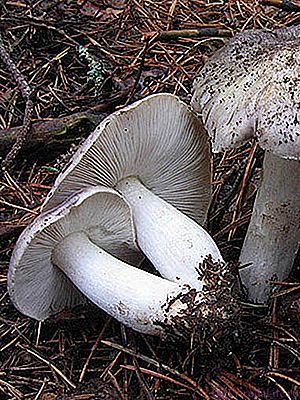
Hat: 4 cm to 12 cm in diameter, fleshy, with a tubercle in the center, smooth to the touch. Young fruit bodies have a rounded-conical shape, which becomes flat with age, almost spread out with some irregularities. The rolled edges of the cap crack with age and bend upward. The color varies from dark gray to light gray with an admixture of olive or purple hues. The color of the cap surface is uneven, with a darker center. When it rains, the hat becomes slippery and sticky
Pay attention to the photo of the ryadovka mushroom found in the Primorsky Territory:


Leg: cylindrical with a wide base. Height up to 10-12 cm with a diameter of up to 3 cm, fibrous. In young mushrooms, the structure of the leg is solid and dense, in older ones it is hollow. Very often, the leg is completely immersed in moss or deciduous-coniferous litter. The color is grayish with some yellowness, in the upper part the leg is covered with a powdery coating.
Flesh: gray or off-white, may turn yellow if broken. Dense, has a smell of fresh ground flour and a pleasant taste.
Blades: wide enough, winding, sparse, white.In adulthood, the plates acquire a gray tint.
Edible: Category 4 edible mushroom.
Distribution: ryadovka coastal mushrooms prefer coniferous and mixed forests, where the main condition is the presence of pine. It is with these trees that the gray rows like to form mycorrhiza. They grow from September until frost, bear fruit amicably, forming large and wide rows or circles of gray mushrooms.
Row gray-blue (Lepista glaucocana)
Synonyms:
- Tricholoma glaucocanum
- Rhodopaxillus glaucocanus
- Clitocybe glaucocana

Description of the mushroom
A hat with a diameter of 4-12 (up to 16) cm, in youth from conical to hemispherical, then from flat-convex to prostrate, usually with a tubercle. The skin is smooth. The edges of the cap are even, wrapped inward in youth, then bent over. The color of the cap is grayish, possibly with a lilac, lilac, or cream shade. The cap is hygrophilous, especially noticeable in age fungi, it becomes brownish due to moisture.
The pulp is white or grayish, may be with a slight shade of the color of the leg / plates, in the leg at its periphery and below the cap at the plates of the color of the leg / plates by 1-3 mm. The pulp is dense, fleshy, in old mushrooms it becomes watery in wet weather. The smell is not pronounced, or weak fruity or floral, or herbaceous, pleasant. The taste is also not expressed, not unpleasant.
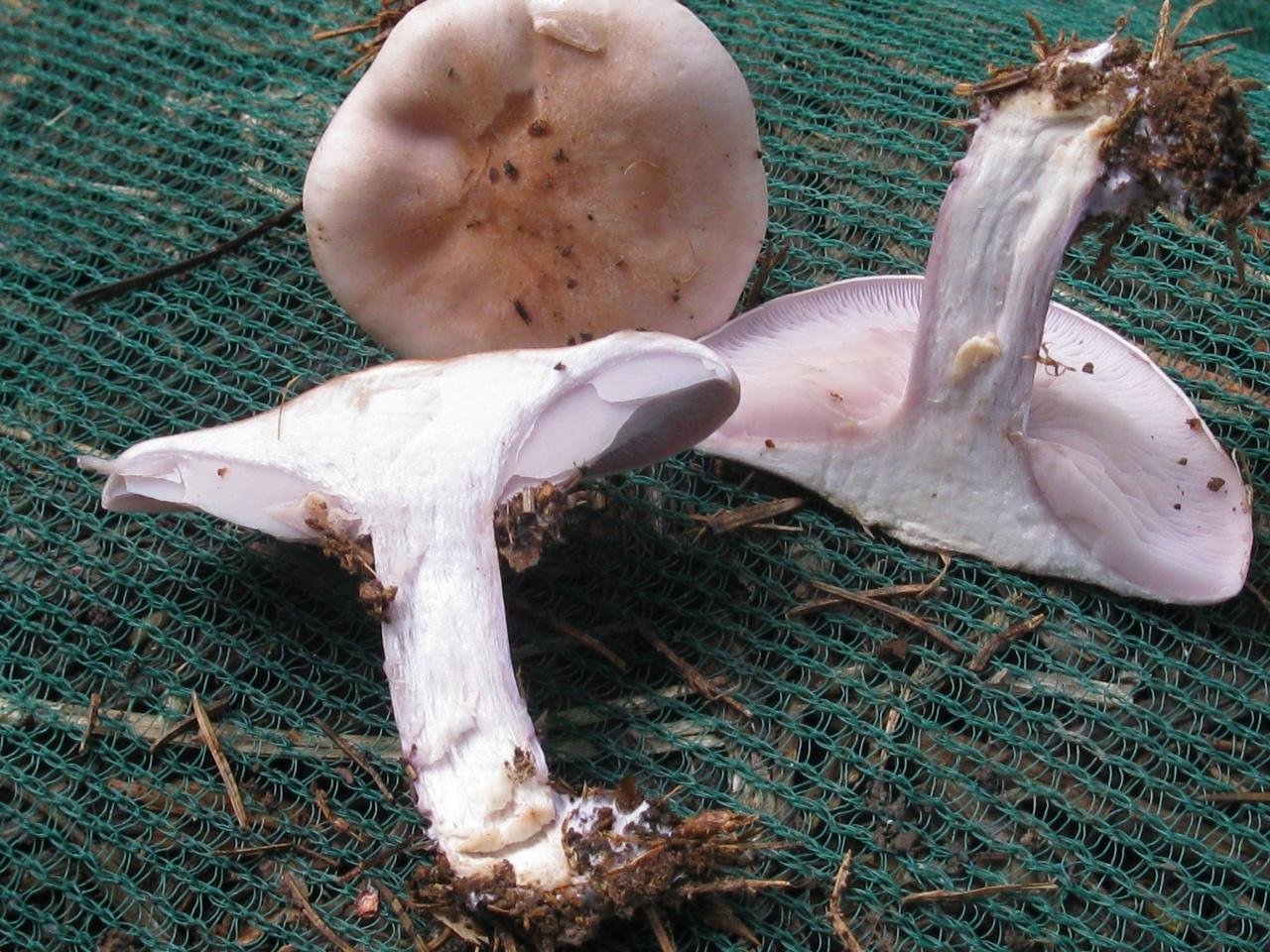
The plates are frequent, rounded to the stem, notched, in young mushrooms they are almost free, deeply adherent, in mushrooms with open caps they are noticeably notched, look like adherent due to the fact that the place of transition of the stem to the cap becomes not pronounced, smooth, conical. The color of the plates is grayish, it can be cream, with shades of purple or lilac, more saturated than the top of the cap.
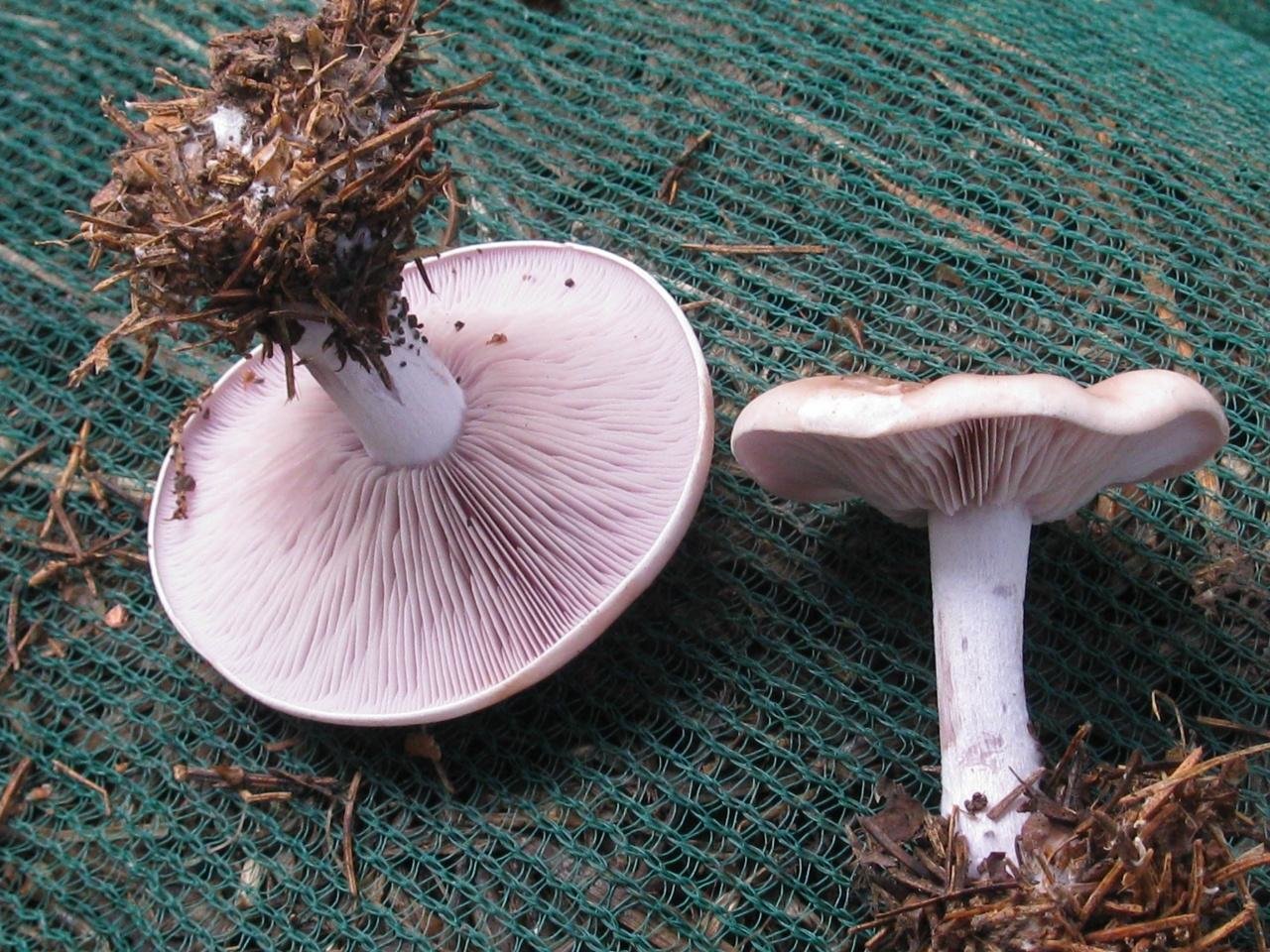
Spore powder beige, pinkish. The spores are elongated (elliptical), almost smooth or finely warty, 6.5-8.5 x 3.5-5 μm.
The leg is 4-8 cm high, 1-2 cm in diameter (up to 2.5), cylindrical, can be expanded from below, clavate, can be curved from below, dense, fibrous. The location is central. The litter grows from below to the peduncle, sprouted by mycelium with shades of the color of the pedicle, sometimes in large quantities. The stem is the color of the mushroom plates, possibly with a mealy bloom in the form of small scales, lighter than the color of the plates.
Habitat
Grows in autumn in all types of forests with rich soil and / or thick leafy or coniferous litter; on heaps of leafy humus and in places where foliage is brought; on rich soils in floodplain copses of rivers and streams, lowlands, ravines, often among nettles and bushes. At the same time, the litter actively grows with mycelium. Likes to grow along roads, paths, where there is a significant amount of leaf / coniferous litter. Grows in rows, rings, from several to dozens of fruiting bodies in a ring or row.
Similar species:
- Row purple (Lepista nuda) is a very similar mushroom, in 1991 there was even an attempt to recognize rowovka grayish-lilac purple variety, however, the differences were sufficient for it to remain a separate species, although a synonym for Lepista nuda var appeared. glaucocana. It differs in a paler color, and the main difference is the color of the pulp: in violet it is deep purple throughout its depth, except perhaps, with rare exceptions, except for the light center of the leg, and in the grayish-lilac color it appears only along the periphery in the leg and above the plates. and quickly disappears with distance to the center of the leg and from the plates.
- Violet row (Lepista irina) The mushroom is similar to the creamy grayish-lilac ridge shape, it has a strong odor.
- Lilac-footed row (Lepista saeva) It differs, firstly, in the place of growth - it grows in meadows, along river banks, along edges, in glades, in the grass, and ryadovka is gray-blue in the forest with a thick leaf or coniferous litter. Although, these species can overlap in their habitat on the edges.In the lilac-footed ryadovka, the characteristic lilac color appears only on the leg, and never on the plates, and in the grayish-lilac color of the leg is identical to the color of the plates.
Edibility.
Conditionally edible mushroom. Tasty. It is completely similar to the purple ryadovka. Heat treatment is necessary, since the mushroom contains hemolysin, which destroys red blood cells (like the purple row), which is completely destroyed during heat treatment.
Photo: Georgy.
Artificial pond and patio: learning from valuable experience
The courtyards of the Americans are very well organized: from the house itself there is a terrace of a fairly large area, which ends with a pool or a small artificial pond. It is convenient: after the steam room, bare feet do not touch dirt and dust, and you can immediately dive into cool water without worrying that the sand from your feet will clog the filters again. Also, the dirt no longer rushes back to the bath. For a real Russian steam room - a wonderful extension! And it is called "patio".
But adhering to a strict design concept is not necessary here: you can place the pond wherever your heart desires, and instead of a long terrace, lead just a path to it. You can even install a fountain or an artificial stream, everything is extremely simple:

